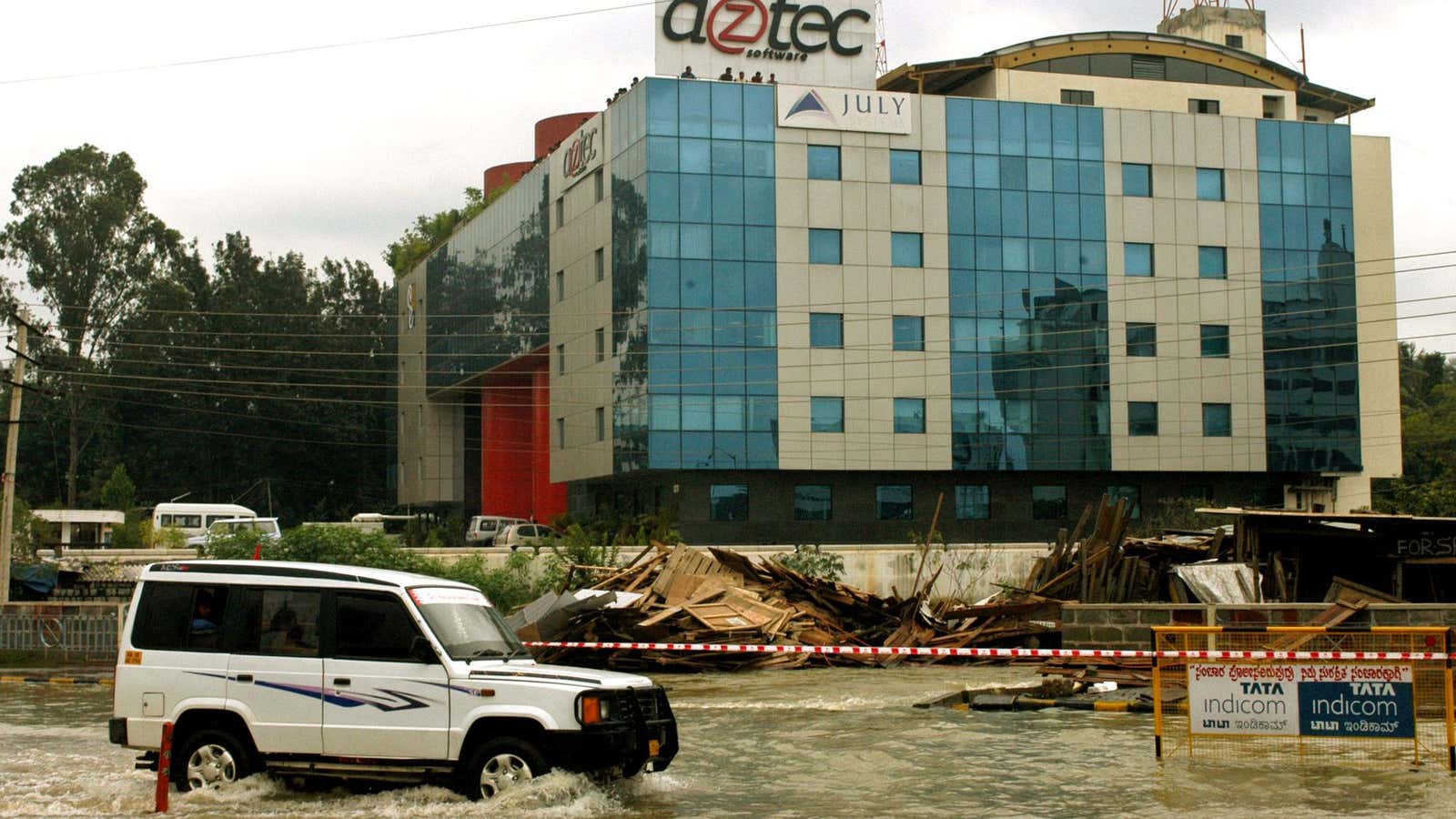Parts of India are celebrating the first signs of monsoon, but red flags are up in the country’s celebrated Silicon Valley.
On June 03, the India Meteorological Department (IMD) warned that rain and thundershowers were very likely in Bengaluru over the following 24 hours. The downpour is likely to continue until June 09, the department said.
Following the weatherman’s warning, the Karnataka State Natural Disaster Monitoring Centre (KSNDMC) issued a notice of its own saying that low-lying localities in five of the eight zones in Bengaluru “are vulnerable to flooding and are expected to get severely inundated.”
The annual rainfall in Bengaluru between June and September typically averages at 98 cm, and early showers have reportedly already accounted for 35 cm.
But such warning is nothing new for the southern Indian city. Last year, in Bengaluru’s wettest season in 115 years, 16 people lost their lives. This year, a daily wage labourer was killed on June 02 when a wall collapsed due to heavy rain. Three others were also injured in the incident.
Already, the disastrous effects of the weather are reportedly at play with severe waterlogging on many roads, metro routes, and underpasses, and scores of trees being uprooted.
Bengaluru is home to large offices of international giants such as Amazon, Apple, and IBM, besides some of India’s leading tech companies like Infosys, Wipro, and Ola. Still, poor infrastructure, especially an inadequate drainage system, ensures that the rains almost always get the better of the city.
“Despite the knowledge of occurrence of heavy downpours and its frequency, the natural drainage channels are not maintained, catchment area of lakes have been allowed to be encroached by land mafia in connivance with the government machinery,” a 2009 study by two researchers from the Indian Institute of Science noted, adding that “unchecked construction of big buildings, loss of open spaces, and clogged drains” make matters worse.
The rapid urbanisation and burgeoning pollution, coupled with weak attempts of rainwater harvesting, are adding to the mess across big cities.
“(In) most metros, including Delhi NCR, Mumbai, and Bengaluru, whenever a downpour of even 30-40mm—which is not considered very heavy rain—happens, low-lying areas still get flooded,” said Mahesh Palawat, chief meteorologist at weather-forecasting company Skymet. “The infrastructure and capabilities of conservationists are responsible for this.” And even though India’s financial capital, Mumbai, has been warned of heavy to extreme rainfall between June 08 and 11 almost a week in advance, “we know there will be flooding there, too,” Palawat said.
